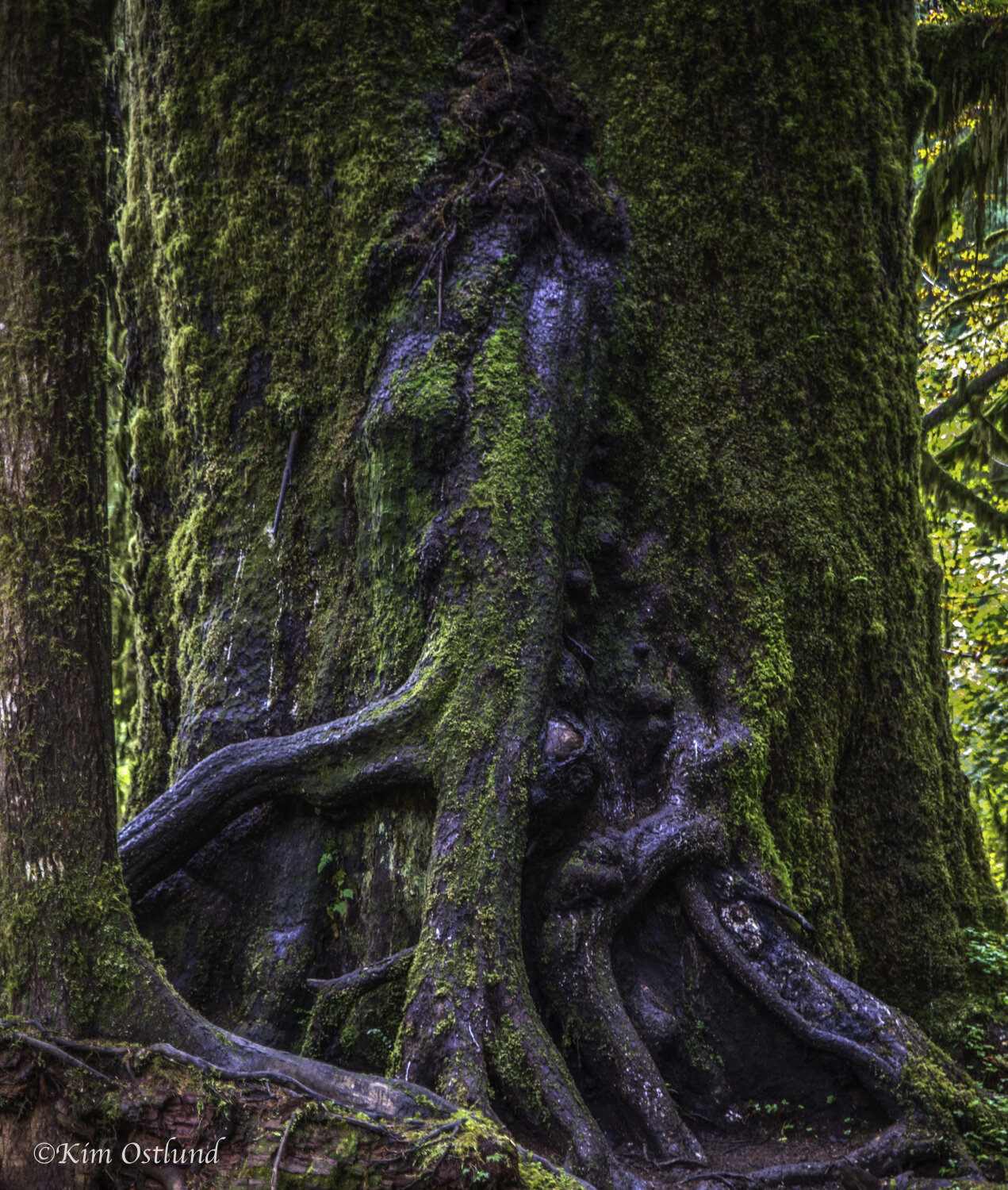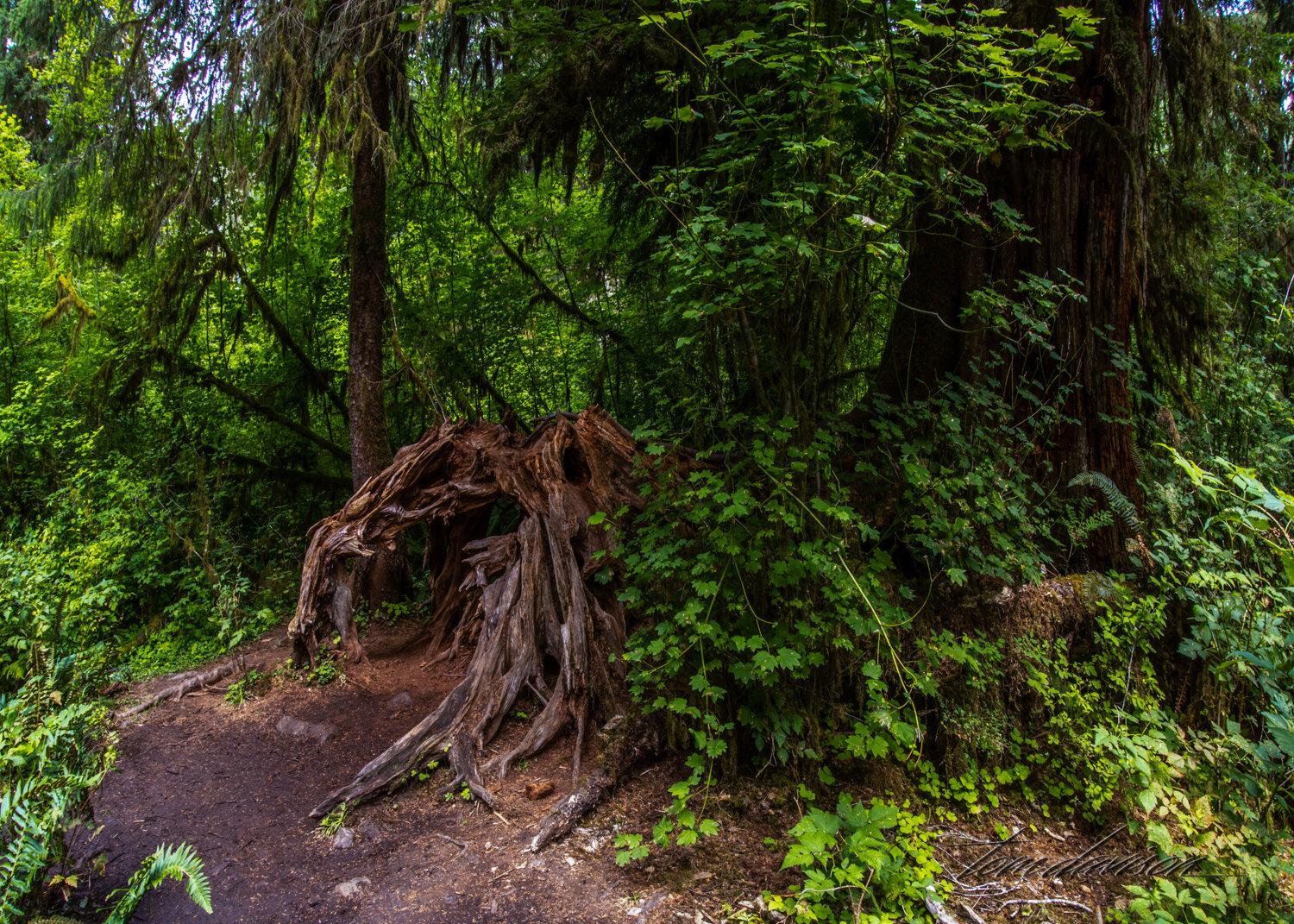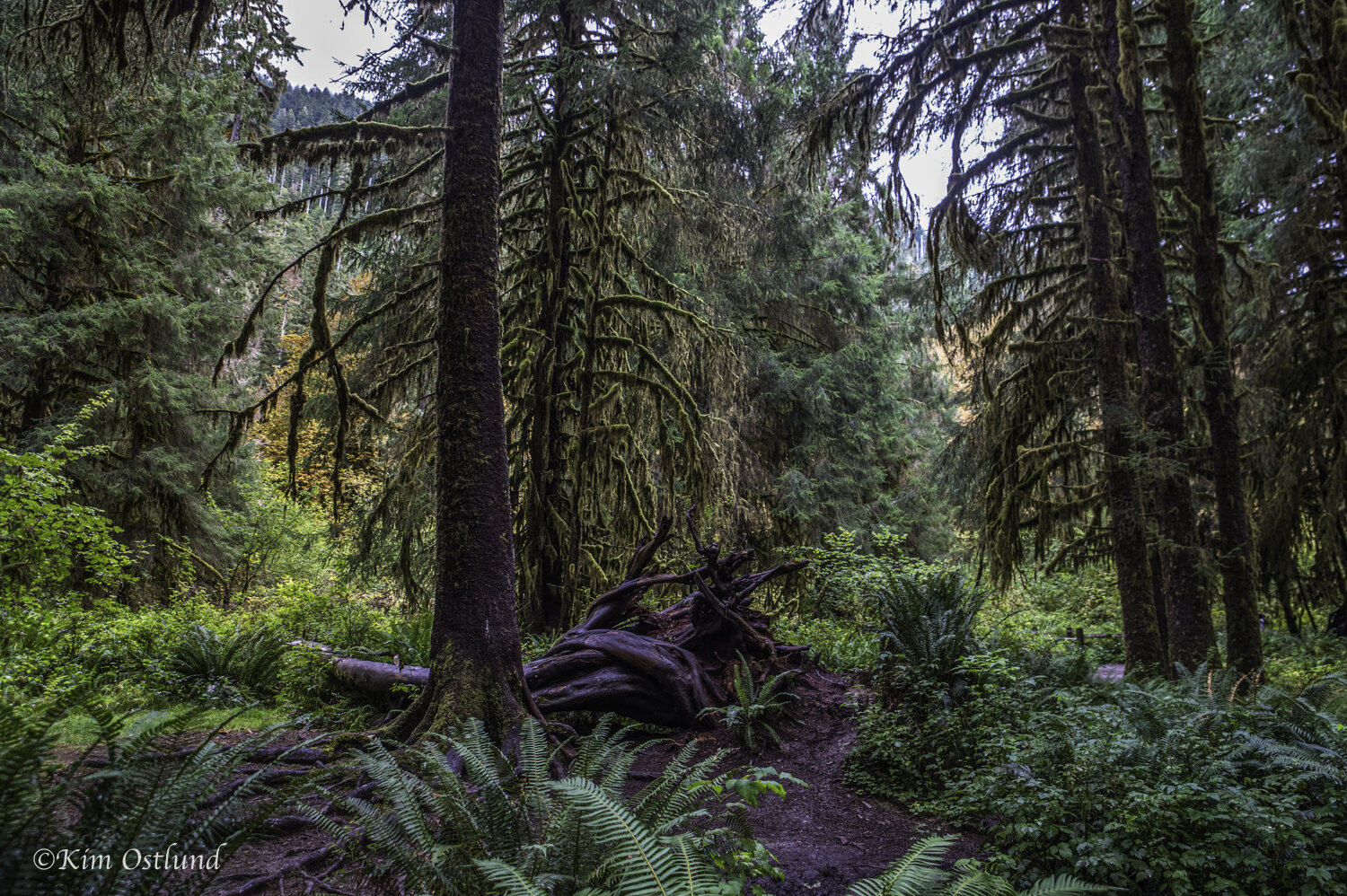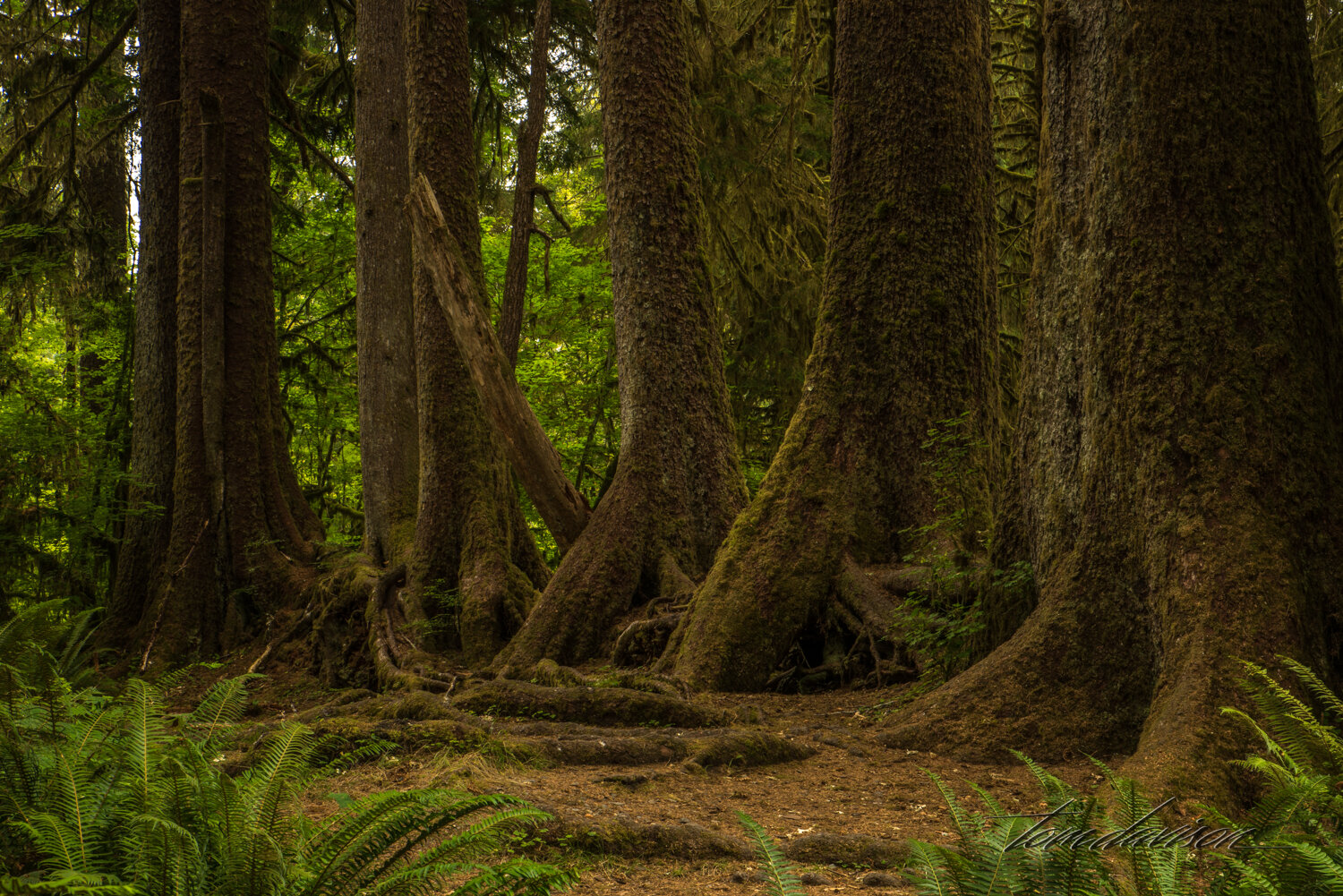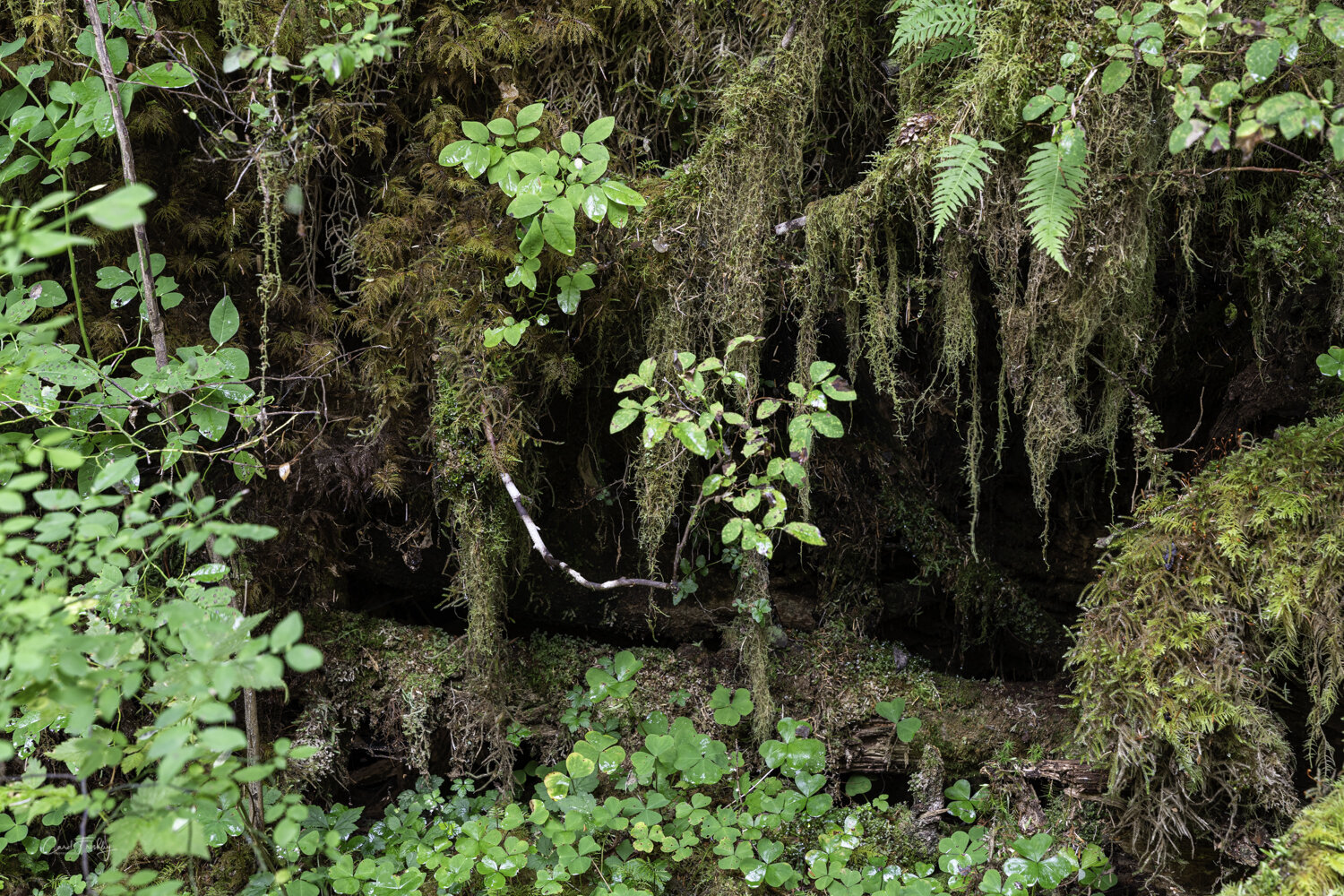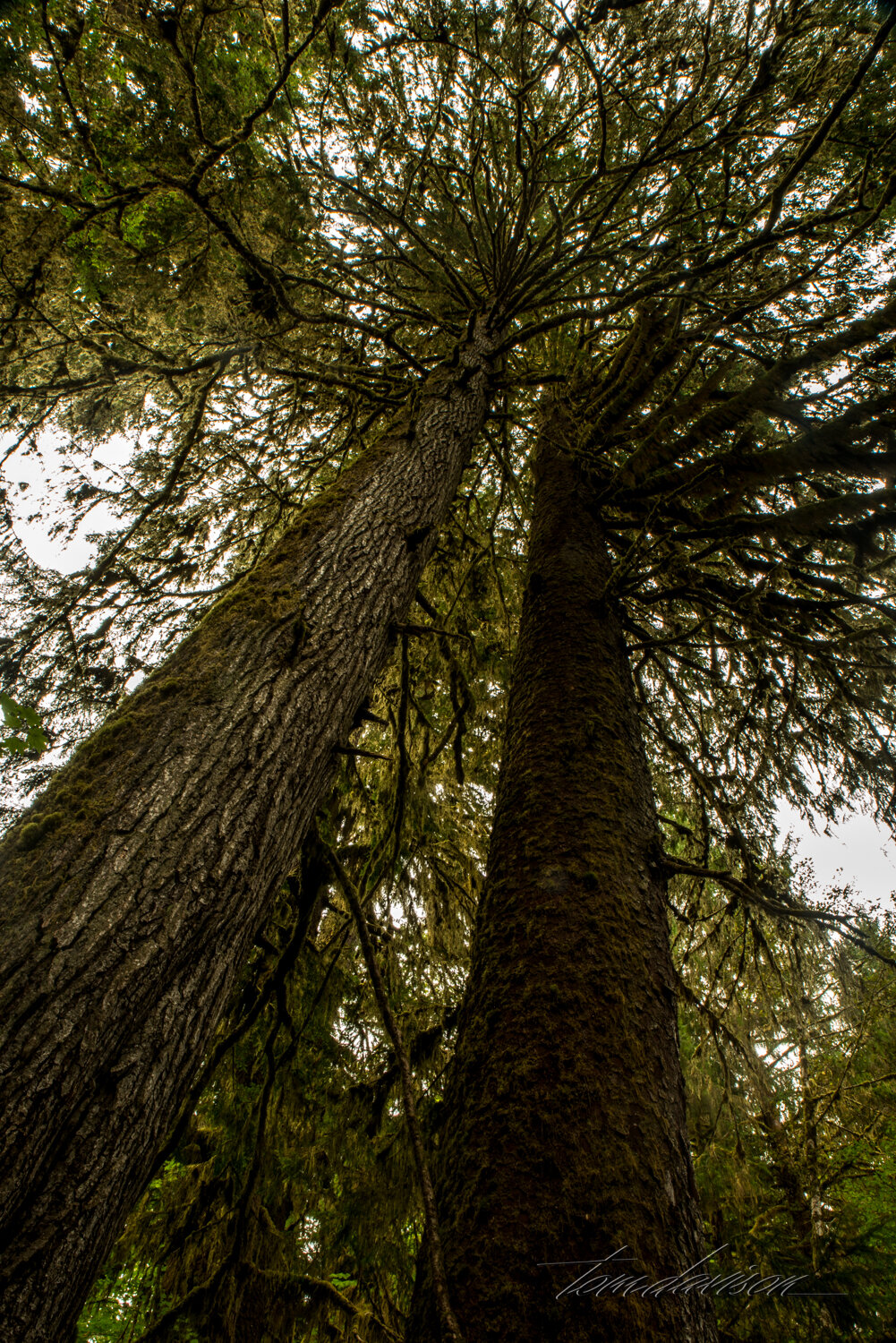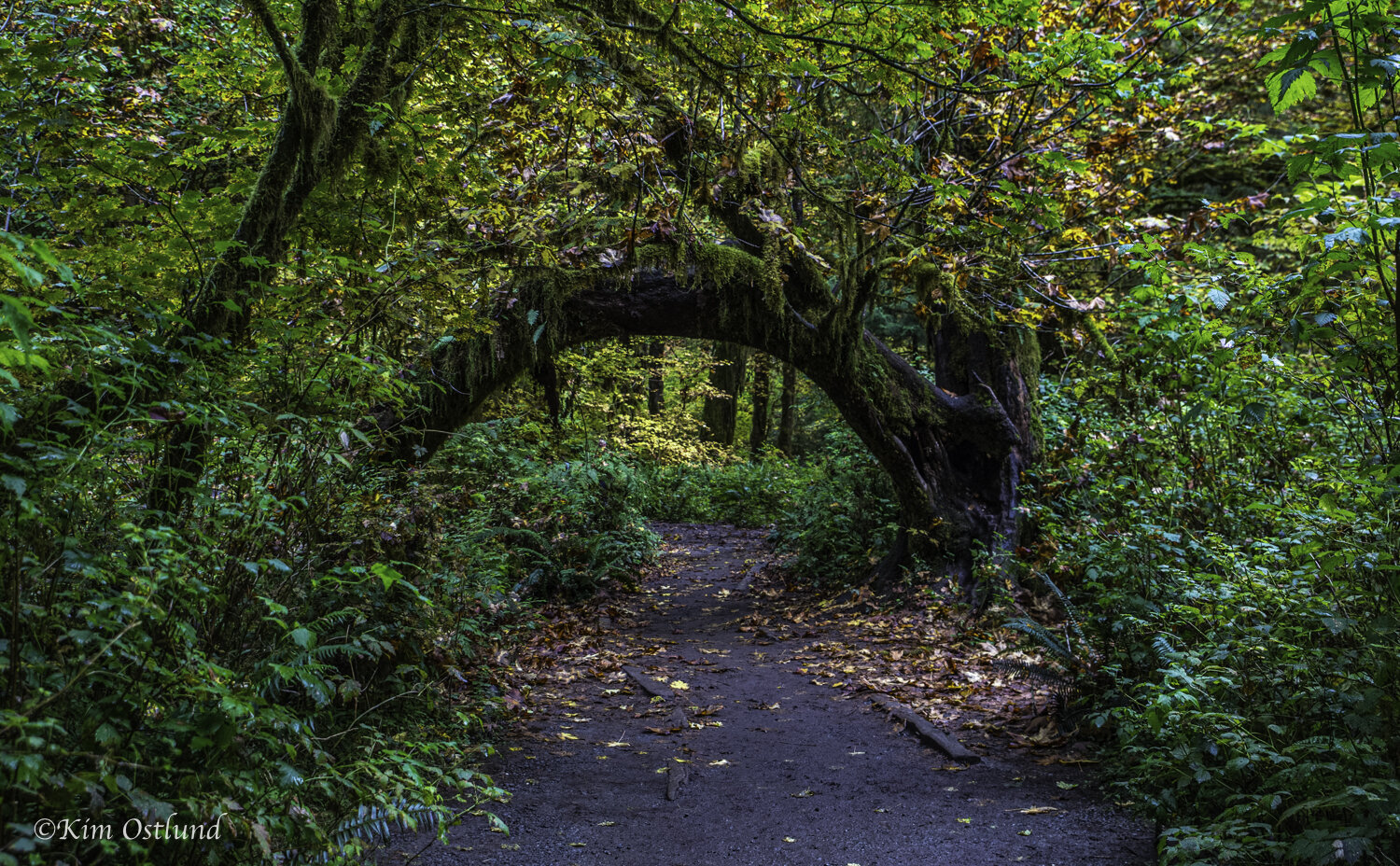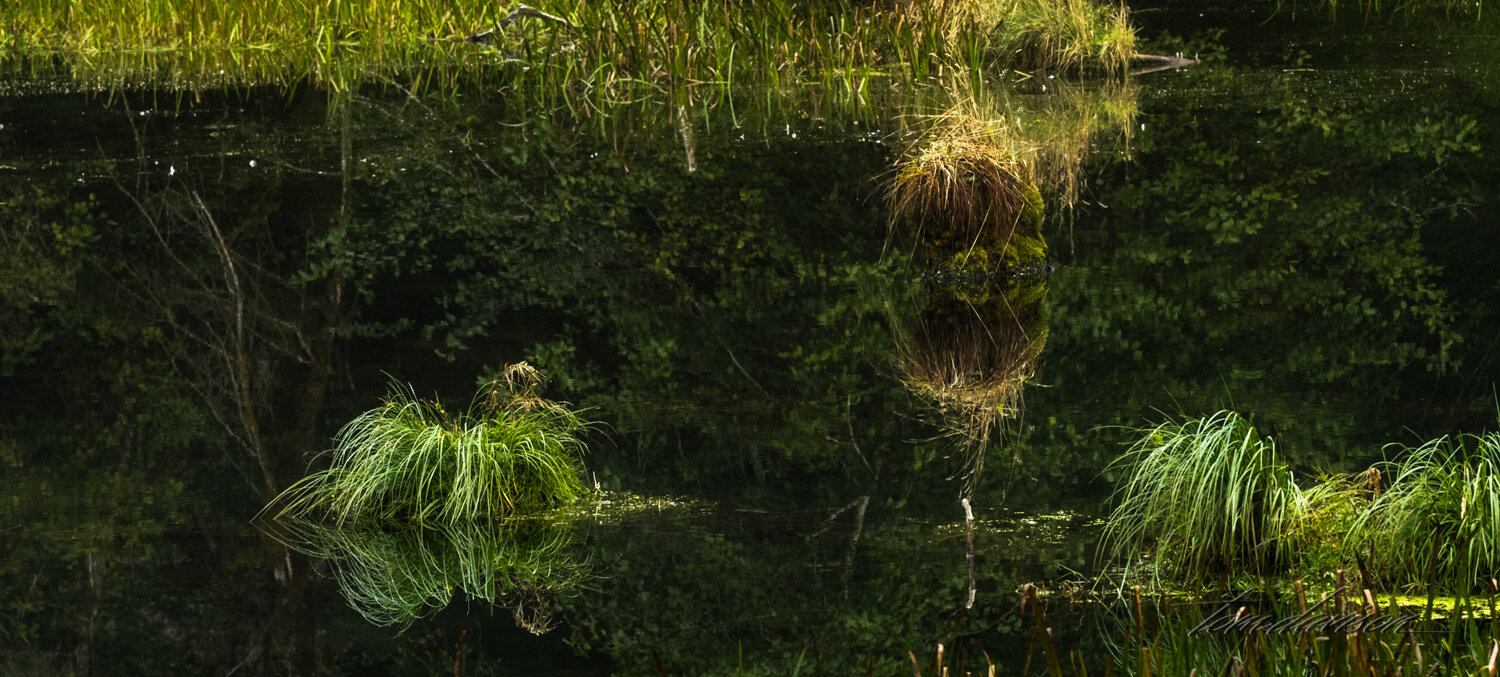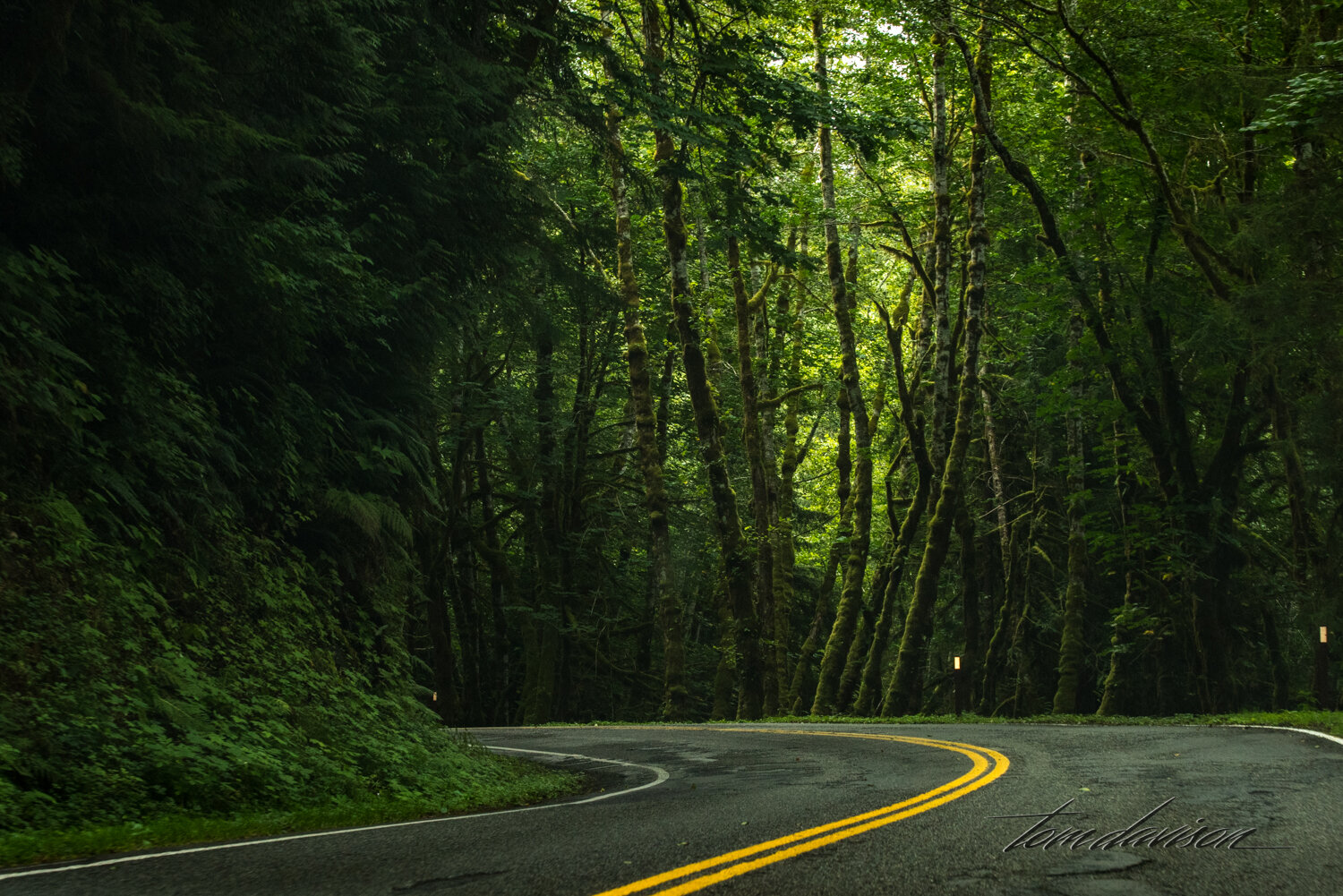If you love the color green, this is the National Park for you. It is a lush temperate rain forest, one of Washington’s Seven Wonders, a World Heritage Site, and a UNESCO designated Biosphere Reserve. It protects the Rosevelt Elk and is home to the banana slug.
The forest is located on the western slopes of the Olympic Mountain range on the Olympic Peninsula. Its location benefits from getting the first moisture laden wind from the Pacific Ocean. As this air rises along the slopes of the mountains it is condensed to form rain. This forest can get up to 14 feet of rain a year and, in fact, the best time to visit the park is when it is raining lightly or misting.
We took the Mosses Trail which is a lovely loop that has a reasonable path that takes you into the heart of the rainforest. My first impression was to watch where i stepped as there were many exposed roots.
It did not hurt to watch for head clearance either.
All along the path one sees incredible scenes of ‘green’.
In the Rainforest, life supports other life which in turn supports other life. On the one hand the place is fascinating. But, sometimes I could see it being spooky too.
Everywhere there are mini-worlds, places of photographic interest for composition.
Most trees are covered with hanging moss. Moss is an epiphyte, which is a plant that grows on another plant without harming it (as opposed to a parasite). Epiphytes get their moisture and nutrients from the air, rain, fog, and debris that accumulates around them.
Tom is dwarfed! The most common types of trees that grow in the Hoh Rain Forest are Sitka Spruce and Western Hemlock (Washington's official state tree), which can reach over 300 feet high and seven feet in diameter.
Looking up, one of Tom’s favorite photographic techniques.
Kim catches on quickly!
There is a creek that runs through the forest and that provides another opportunity to see . . . GREEN!
We visited the rainforest several times and the last time we were there we saw the beginning of fall foliage. What a treat! The maples in the forest begin to turn and all of a sudden there is a whole new dimension to the forest.
Can you find the man down the path?
Near the entrance to the park there is a good place to stop and capture a stream and green!
We finish up with some shots from the road.
A special thank you to Kim and John for sharing the forest with us.












